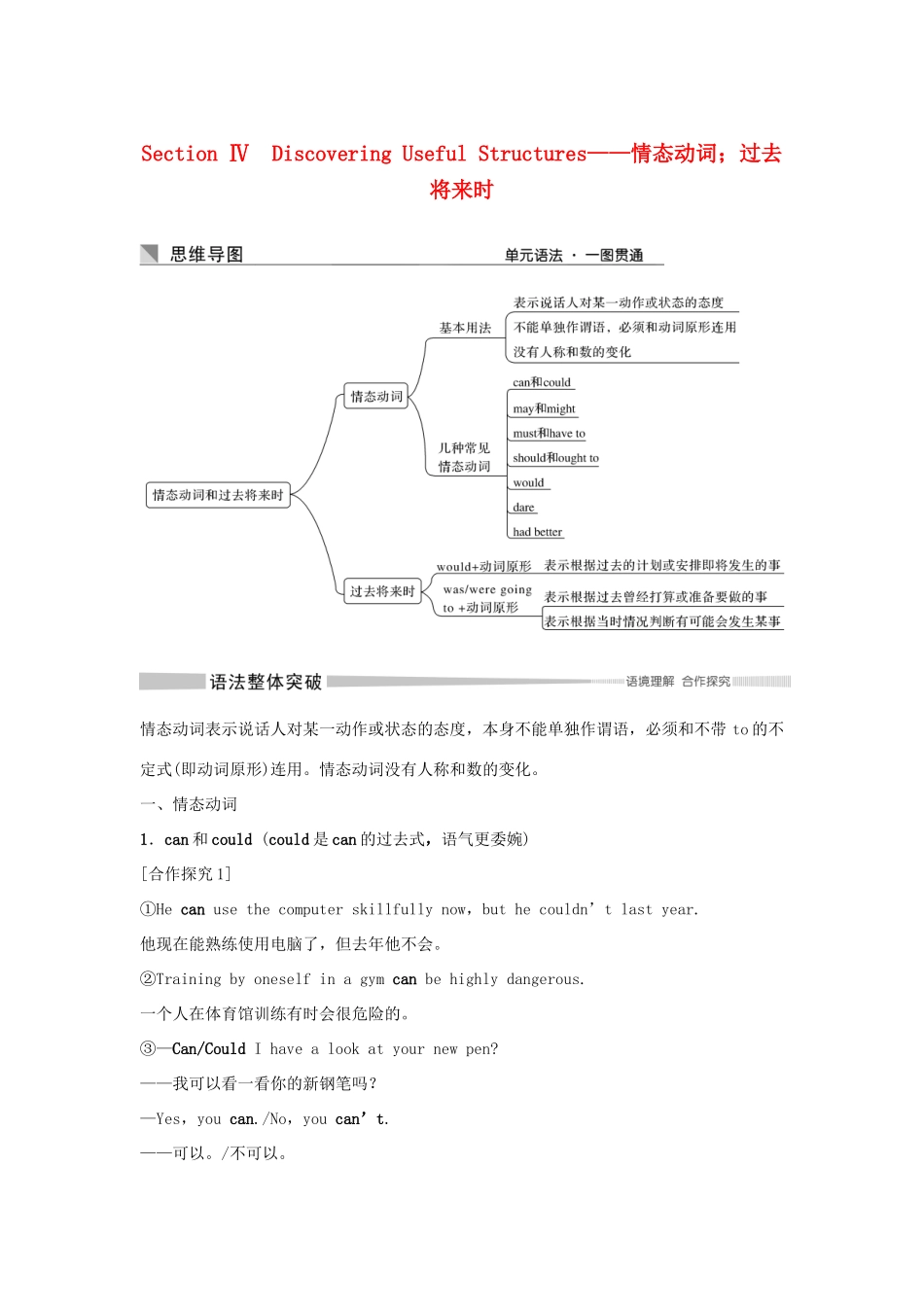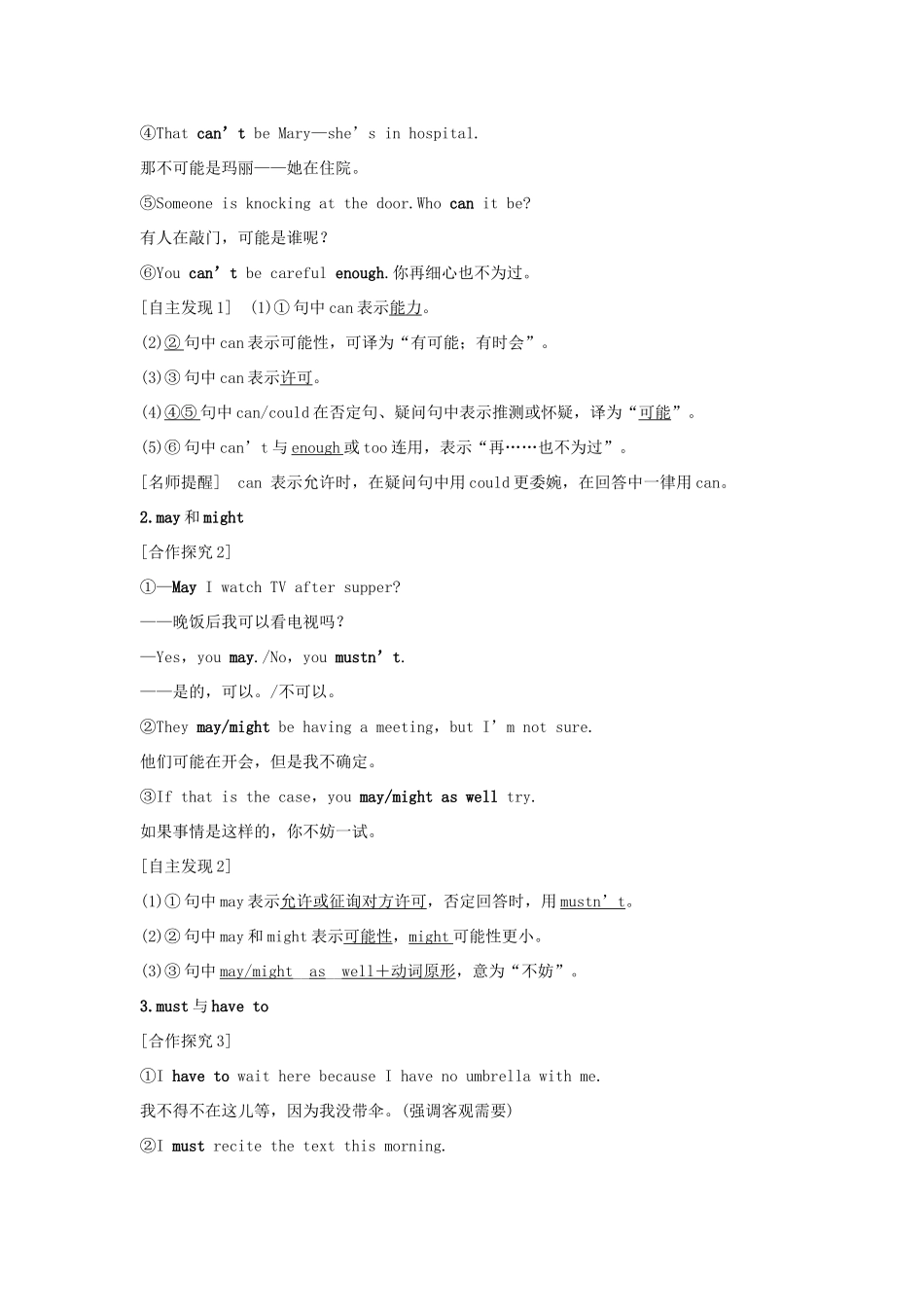Section Ⅳ Discovering Useful Structures——情态动词;过去将来时情态动词表示说话人对某一动作或状态的态度,本身不能单独作谓语,必须和不带 to 的不定式(即动词原形)连用。情态动词没有人称和数的变化。一、情态动词1.can 和 could (could 是 can 的过去式,语气更委婉)[合作探究 1] ①He can use the computer skillfully now,but he couldn’t last year.他现在能熟练使用电脑了,但去年他不会。②Training by oneself in a gym can be highly dangerous.一个人在体育馆训练有时会很危险的。③—Can/Could I have a look at your new pen?——我可以看一看你的新钢笔吗?—Yes,you can./No,you can’t.——可以。/不可以。④That can’t be Mary—she’s in hospital.那不可能是玛丽——她在住院。⑤Someone is knocking at the door.Who can it be?有人在敲门,可能是谁呢?⑥You can’t be careful enough.你再细心也不为过。[自主发现 1] (1)① 句中 can 表示能力。(2)② 句中 can 表示可能性,可译为“有可能;有时会”。(3)③ 句中 can 表示许可。(4)④⑤ 句中 can/could 在否定句、疑问句中表示推测或怀疑,译为“可能”。(5)⑥ 句中 can’t 与 enough 或 too 连用,表示“再……也不为过”。[名师提醒] can 表示允许时,在疑问句中用 could 更委婉,在回答中一律用 can。2.may 和 might[合作探究 2] ①—May I watch TV after supper?——晚饭后我可以看电视吗?—Yes,you may./No,you mustn’t.——是的,可以。/不可以。②They may/might be having a meeting,but I’m not sure.他们可能在开会,但是我不确定。③If that is the case,you may/might as well try.如果事情是这样的,你不妨一试。[自主发现 2](1)① 句中 may 表示允许或征询对方许可,否定回答时,用 mustn’t。(2)② 句中 may 和 might 表示可能性,might 可能性更小。(3)③ 句中 may/might__as__well +动词原形 ,意为“不妨”。3.must 与 have to[合作探究 3] ①I have to wait here because I have no umbrella with me.我不得不在这儿等,因为我没带伞。(强调客观需要)②I must recite the text this morning.今天早上我必须背会这篇课文。(强调主观意志)③—Must we hand in our ex...


